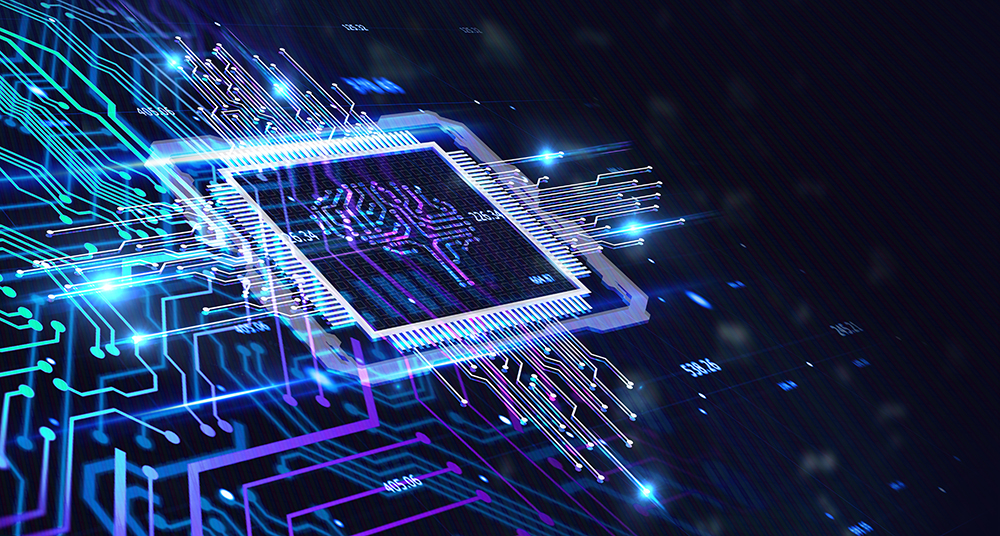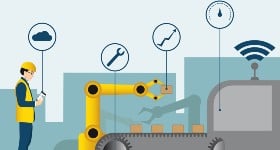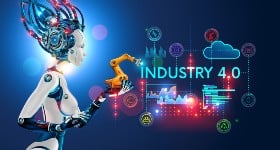
The combination of Artificial Intelligence (AI) techniques with Internet of Things (IoT) capabilities carries huge potential to improve industrial operations and how consumers interact with their connected devices and services. This is possible because of affordable connectivity, an abundance of data, and advances in AI/Machine Learning (ML) techniques. Together, these three ingredients are the recipe for faster adoption of digital technology. There is a deeper significance, however, from the innovation they enable and the impact this will have on digital transformation in corporate, consumer, and industrial sectors of the economy.
AI for the IoT
The rate at which the population of connected devices is growing has led to predictions that the global market for IoT end-user solutions is expected to be around $1.6 trillion by 2025. A recent white paper on the EU’s approach to AI cites a growth in the worldwide production of data from 33 zettabytes in 2018 to 175 zettabytes in 2025.
Analysing that data, developing insights, and making decisions based on what is revealed is beyond the capacity of mere mortals, especially when it has to happen in real time. Consider the example of predictive maintenance in an industrial setting. This is a procedure that aims to anticipate component failure in a machine and trigger preventive maintenance. It can prevent damage arising from an unforeseen incident and helps organisations to plan any operational downtime.
Being able to predict when a machine is about to break relies on the analysis of many different data points and the application of a range of AI and ML technologies including ad hoc statistical analysis, predictive modelling, text analytics, optimisation and real-time scoring. All of these take place in the blink of an eye and involve the integration of many separate and different functions and hardware components. It also involves 24/7 vigilance, year in and year out.
Opportunities to apply AI with IoT
There are three main ways in which AI applications and IoT devices can interact in different consumer and industrial deployments. Firstly, and most simply, devices in the IoT domain provide information for use in the AI domain where, knowledge-based analysis and decisions are made. This is a case of AI running on top of the IoT domain.
Secondly, AI can be applied inside the IoT domain itself. An example might involve knowledge-based checks on whether a sensor is working correctly and providing uncorrupted data to applications in the AI domain. This captures situations where data might be compromised because of a faulty sensor or due to an unplanned break in transmission. In addition to statistical checks, the use of AI might involve comparisons against a digital ‘twin’ to detect whether a sensor is operating in a degraded manner. By making sure the data reaching it is correct, applications in the AI domain are saved from the additional workload of performing data verification tasks.
The third model of interaction involves reasoning relationships between applications in the AI and IoT domains. These relationships provide the foundations for explainable-AI and trustworthy-AI. Consider the case of an AI application that signals an incipient fault in a mission critical machine. Before that machine is taken out of service for maintenance, a technician would seek an explanation of the chain of logic, provenance of data and the anomalies that led to a fault being deduced. To place trust in a decision from an AI system, the technician might rely on profile and historical data about an IoT sub-system. Profile data might include information about the supplier as well as certification credentials or security capabilities engineered into the sub-system. Historical data might include information about the regularity of calibration tests and updates to firmware and security credentials over time.
Importance of repeatable and interoperable solutions
The three models of AI and IoT domain interactions apply to all consumer and industry application domains. To capture economies of scale and deliver the benefits of repeatable solutions, the integration of AI and IoT solutions needs to ensure that different parts of the ecosystem are compatible with each other. That would make frequently used AI capabilities, such as feature classification or pattern recognition, comparable to common IoT services such as device management, data discovery and security. Through this perspective, developers and solution providers would draw from a toolbox of reusable AI and IoT services to build interoperable solutions. This is where the use of a global interoperability standard is hugely advantageous.
To address the emerging need for AI in IoT, a new, standards-based initiative is mapping out an architecture for how IoT systems can make use of AI and ML to manage and apply IoT data over a variety of deployment models – for example, edge or cloud-based – while remaining interoperable, secure and manageable. It will consider architecture evolutions based on an analysis of representative use cases. Over the course of 2020, the study group will share insights from its analysis and illustrate key concepts through a proof of concept. This work will reuse standardized IoT tools, building on the horizontal architecture defined by oneM2M standards.
A symbiotic relationship
IoT devices and AI applications have a symbiotic relationship. Connected devices need the computing power of AI to make sense of and utilise the vast amounts of data they create. AI applications need IoT devices to provide them with the quality of information needed to make complex and rapid decisions backed up by transparent reasoning. Well-engineered interactions between data and intelligence across AI and IoT domains will play a pivotal role in delivering the breakthroughs that have been predicted to transform our homes, cities and working lives.
Edited by
Ken Briodagh





